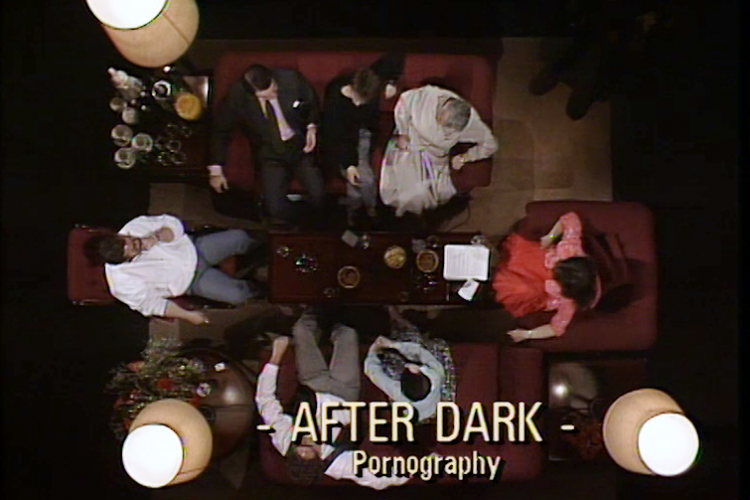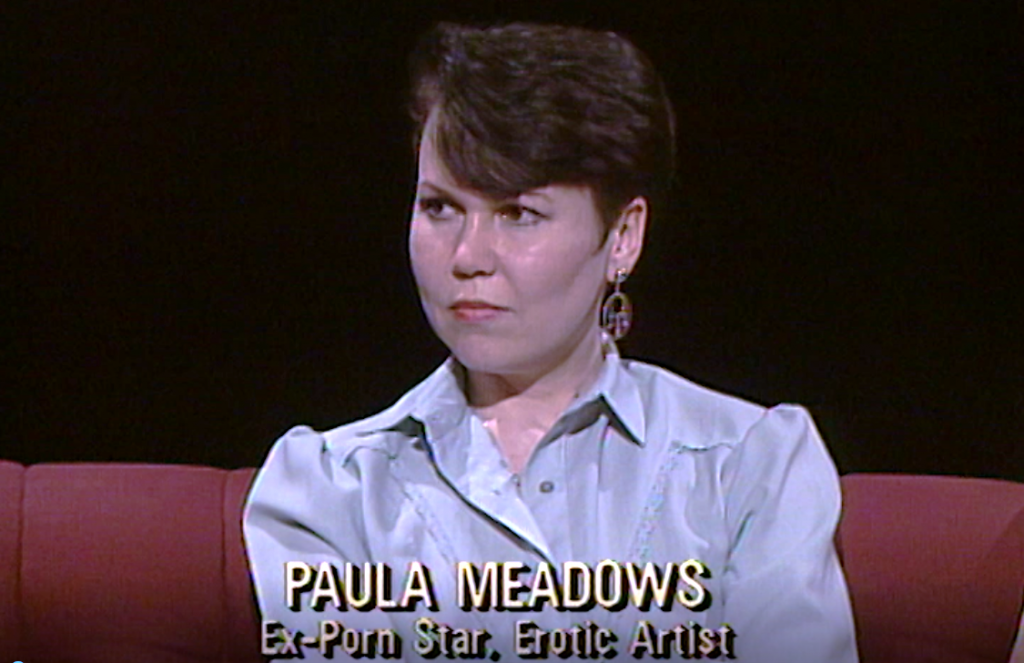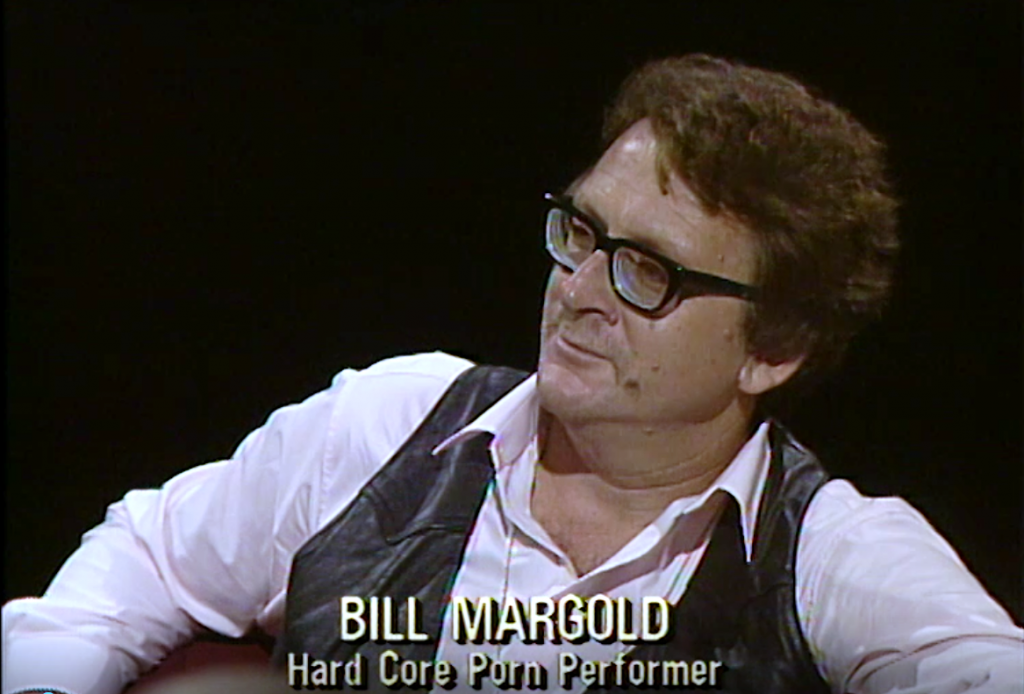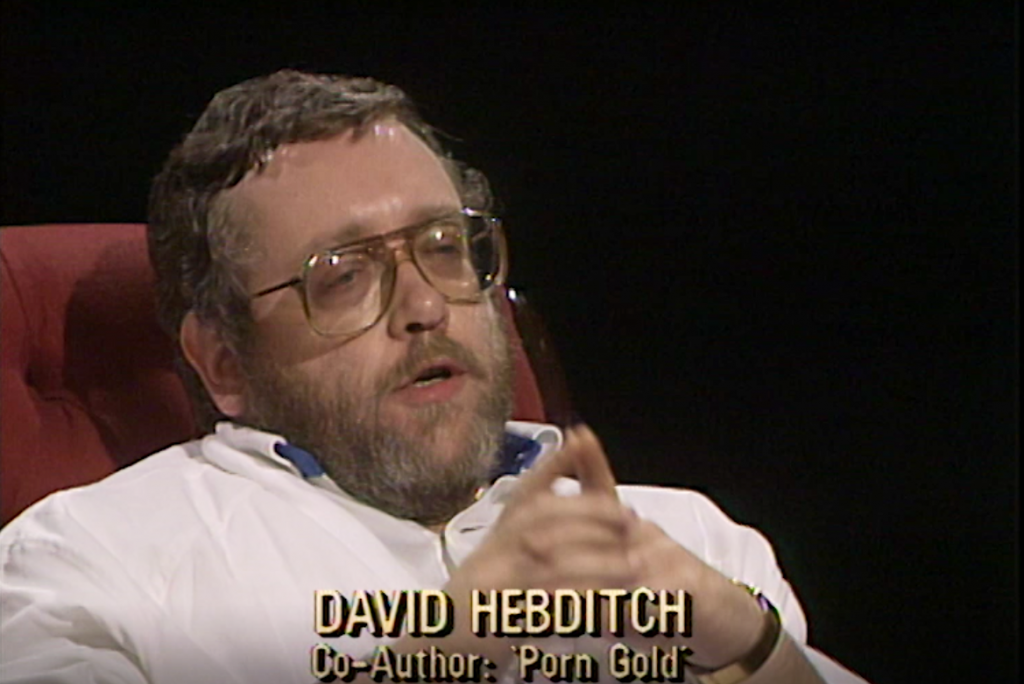After Dark was a live television discussion series that was produced by Open Media and broadcast initially on Channel 4 in the UK between 1987 and 1997. It usually started before midnight and ended when the host and the guests decided that enough was enough; that could be three hours later. The series was critically acclaimed as a genuine innovation in factual broadcasting by everyone except the Chief Executive of Channel 4, Michael Grade, who controversially axed it in 1991. It returned in 1993 and continued until 1997 in the form of one-off specials. The BBC broadcast some new editions of the show in 2003. For a lot more about this remarkable – and much-missed – series, see here. In this post, David Hebditch recalls his After Dark experience.
Being on After Dark was like being in a space capsule, but with added gravity and gravitas. Nick Anning and I were delighted to be invited to help in the production of an episode about pornography. One of us would be on the show and we were asked to suggest two other participants who had worked in the hard-core industry. We scratched our heads to think of who would do well in the format. Their English would need to be good enough to sustain three hours of discussion and would share their experiences and opinions honestly.
We first opted for Los Angeles-based porn-actor/director Bill Margold. Having spent a lot of time interviewing Bill, I knew that he would talk until the cows came home and was guaranteed to be controversial. We wanted a female for the other guest. Nick and I both liked porn-actress and erotic artist Paula Meadows and knew she would be a quietly-intelligent presence on the show. Series producer Sebastian Cody seemed happy with our suggestions.
We had no idea who the other participants would be and it wasn’t until the evening of the broadcast that I was told I’d be on the show. I’d assumed Nick would do it. The full list, going clockwise around the table from the host, barrister Helena Kennedy QC, were: Paula Meadows; the late Bill Margold; me, opposite Helena Kennedy; James Bogle of the National Viewers and Listeners Association (NVLA); Dr Susanne Kappeler, the author of a book called The Pornography of Representation; and Dr Hanna Segal, a psychoanalyst. Finally, sitting in the dark next to Helena Kennedy was a Soho porn bookshop manager who was referred to as ‘Dave’. I can’t tell you what he looked like – I never saw him in the light.
No-one was told what they could or could not say – nor where they could sit. Paula and Bill sat next to each other and that left the rest (excluding ‘Dave’) to sit opposite them. I was more than happy to sit in the middle. This, as it worked out, was not a bad arrangement; it is difficult to argue with someone sitting next to you because you don’t have eye-contact and can’t see facial expressions. The format of the show is certainly effective. Nothing diverts one’s attention from the group around the table and I found it impossible to hear the movement of cameras and studio floor-staff – even though, at times, they must have been very close. (I’m now hard of hearing, but I wasn’t back then.) I was unaware before the show that, if you wanted something, you needed to ask for it. That included alcohol. However, in hindsight, the absence of booze on my adjacent table probably wasn’t such a bad thing… (No-one else was drinking either.)
As far as the discussion was concerned, it was pretty lively at times and it ran close to a full three hours. The host, Helena Kennedy, did an excellent job of staying balanced and keeping order. (She presented many editions of After Dark.) Bill Margold did his job of being outrageous and The Guardian review said this about him:
‘Margold’s breezy definition of hard core – “up, in, out, off” – belies his ambition to give the public genuine artistic storylines… I was waiting for someone, preferably a woman, to hang one on big, burly Poppa Bear, who is about the most arrogant, bullying, bulldozer loudmouth this sleep-cheating series has so far brought us.’
I don’t recall anything Susanne Kappeler said on the show. Her book (still available on Amazon) is a feminist perspective on pornography: City Limits magazine said it ‘Opens up the pornography debate with a thought-provoking attack on all male-defined art.’ It was more fun sparring with Dr Hanna Segal who seemed a lot more willing to engage with contrary arguments.
After my opening remarks about the book and its primary findings I tried to restrict myself to offering facts and figures from our research for Porn Gold. This didn’t always work. When James Bogle (from Mary Whitehouse’s NVLA) insisted that pornography causes men to rape women and abuse children, I pointed out that the countries that had decriminalised porn had found no subsequent increase sex crimes. Indeed, in most cases it had actually declined – though no causality was claimed in those cases. Bogle ignored these facts and just repeated the claim. And again. And again.
Many thanks to Open Media for providing the above images and clips.




